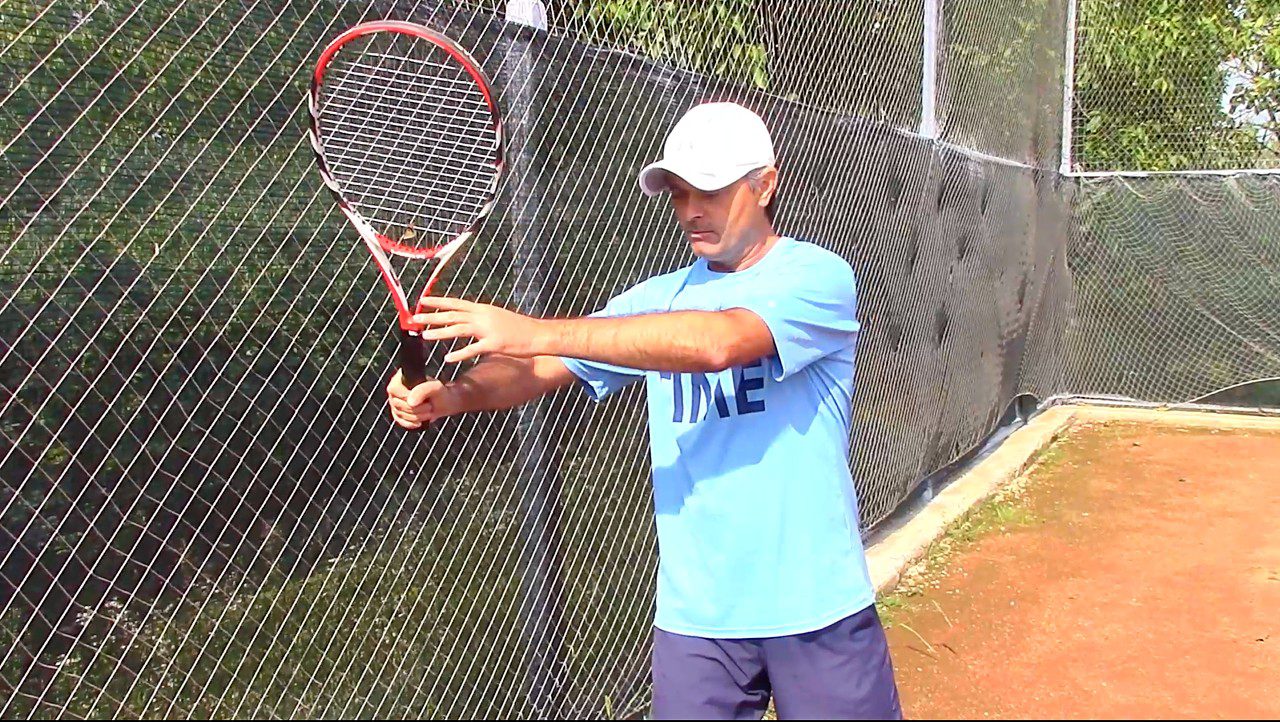Improving your tennis forehand technique doesn’t always require complicated adjustments.
One simple but highly effective tip I’ve found is to raise your dominant elbow during your backswing. This small change can help you shorten your backswing, allowing you to make contact with the ball earlier and further out in front, which is especially useful when facing hard-hitting opponents.
Shorten Your Backswing by Raising Your Elbow
When preparing for your forehand, focus on your dominant elbow as you turn your shoulders and take your racket back. Instead of letting your elbow drop, raise it so that it’s the first part of your arm to touch a fence or wall behind you if there was one. This raised elbow position naturally shortens your backswing because your racket won’t go too far back.
Why does this matter? A shorter backswing means you can swing through the ball sooner and make contact further in front of your body. This timing advantage is crucial when playing against players who hit the ball hard and fast. If your elbow is low and your backswing is long, you might find yourself late on the shot, making contact too close to your body and losing control.
How to Practice This Technique
I recommend practicing this elbow-raising drill against a ball machine. As you get ready for each shot, focus on turning your shoulders and raising your dominant elbow during your backswing. Feel how your elbow leads the motion and keeps your backswing compact. From this position, you can smoothly drop the racket and swing forward, hitting the ball at the optimal point.
This simple adjustment can make a huge difference in your forehand timing and control, especially under pressure from aggressive opponents.
Key Benefits of Raising Your Elbow
- Earlier contact: Helps you hit the ball earlier and with better timing.
- Better control: A shorter backswing improves precision and consistency.
- Improved positioning: Makes it easier to meet the ball out in front where you generate more power and leverage.
- Adaptability: Useful when facing fast-paced shots, helping you stay ahead of the ball.
Conclusion
Raising your dominant elbow during your forehand backswing is a quick and easy fix that can elevate your tennis forehand technique. This adjustment shortens your backswing, improves your timing, and helps you make contact with the ball further out in front. Try this tip during your next practice session, especially against a ball machine, and feel the difference it makes in your stroke.

FAQ
Q: Why is a shorter backswing important for my forehand?
A shorter backswing allows you to make contact with the ball earlier and further in front, which improves timing and control, especially against fast shots.
Q: How do I know if I’m raising my elbow correctly?
If your dominant elbow would be the first thing touching a fence behind you when you take your racket back, you’re on the right track.
Q: Can this technique help with all types of forehands?
Yes, raising your elbow to shorten the backswing can benefit both topspin and flat forehands by improving timing and control.
Q: Should I practice this only with a ball machine?
While practicing against a ball machine helps you focus on the elbow position, you can apply this technique during regular play as well.


0 Comments